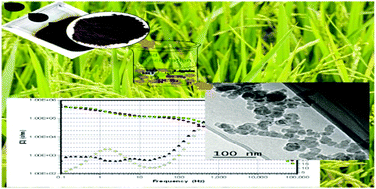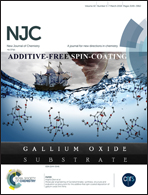Lignin nanoparticles: synthesis, characterization and corrosion protection performance†
Abstract
The conversion of micro lignin to lignin nanoparticles (LNP) and their application in engineering and technology are potential steps towards global sustainability because lignin is obtained from industrial and agricultural waste and can be used in green chemistry. In the present study, we report the high-yield synthesis of lignin nanoparticles in different media, i.e., castor oil (CO), ethylene glycol (EG) and water (W) and evaluate their effect on the size and morphology of the LNP. The syntheses of LNP cover 9 out of 12 of the green chemistry principles; the synthesis was carried out via acid precipitation in a polyol medium, which acts as a stabilizing agent. From the results of the TEM, DLS, and SEM studies, it was observed that ≈15–20 nm LNP were successfully formed and spherical morphologies were observed when EG and CO were used as solvents. Furthermore, the anticorrosive behaviour of these nanoparticles was evaluated; the LNP acted as anticorrosive nanofillers for the protection of carbon steel (CS) in stringent corrosive conditions and was dispersed in an epoxy matrix to formulate epoxy nanocomposite coatings. Physicomechanical and electrochemical impedance spectroscopy (EIS) studies suggest that LNP-dispersed epoxy coatings potentially protect the underlying materials and show better protection as compared to the bare epoxy coatings.



 Please wait while we load your content...
Please wait while we load your content...